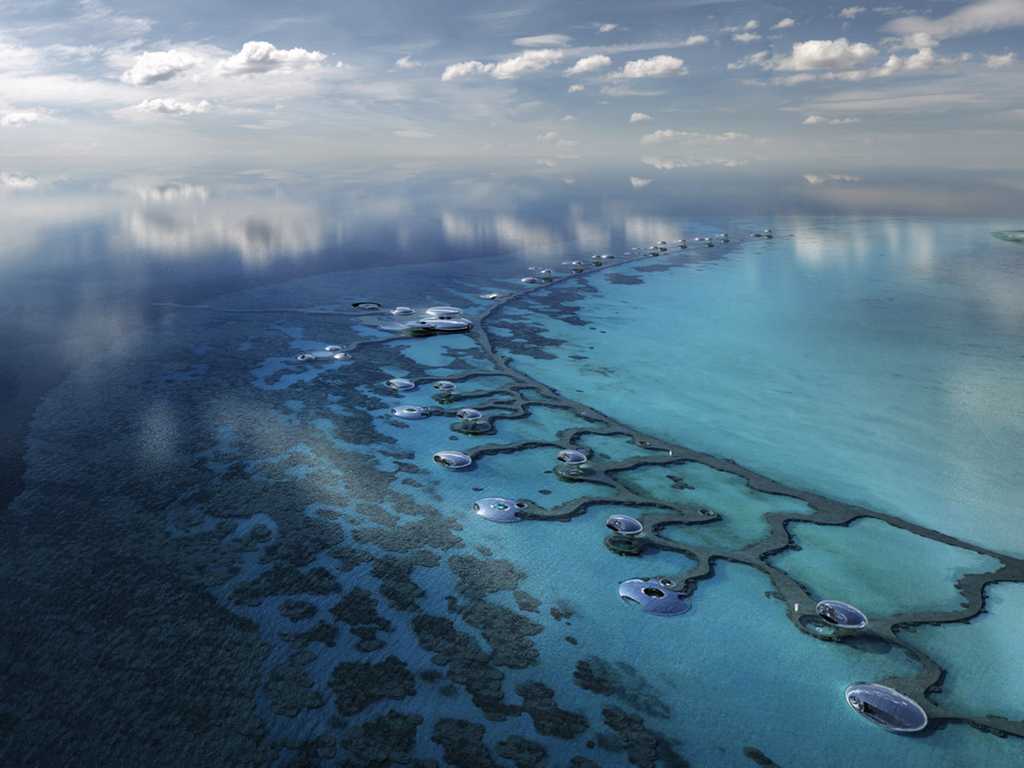Forget the Maldives, why Saudi Arabia's Red Sea Project should be on your bucket list
15 May, 2019

Untouched islands, incredible marine life and luxury overwater villas – this might sound like a Maldivian resort, but it’s actually an important part of Saudi Arabia’s tourism vision. Having spent many years “sealed off” to international visitors, the kingdom is preparing to open itself up to the world.
Religious tourism is currently the main reason that people visit the country, with about two million pilgrims arriving in Saudi Arabia last year. There are plans to increase this 15-fold by 2030 and welcome 30 million pilgrims. But the country is also looking to enhance its non-religious tourism sector.
Saudi Arabia is keen to become the new tourism kid on the block. In 2016, when the kingdom launched Vision 2030, its plan to reduce the country’s dependence on oil revenue and diversify its economy, tourism was highlighted as one of the areas it would focus on.
Since then, a host of mega tourism projects have been announced across the country, including Neom, a high-tech, coastal city to be powered by renewable energy; a wellness-focused destination on the Red Sea coast called Amaala; and Al Ula, the country’s first Unesco World Heritage Site. But perhaps the most exciting tourism development is the Red Sea Project, a luxury destination that might be referred to as the kingdom’s answer to the Maldives, or the Seychelles of Saudi Arabia.
Located between the coastal cities of Umluj and Al Wajh, the project is being built in a region spanning 30,000 square kilometres and will comprise a natural archipelago of pristine islands and a vast desert landscape filled with mountain peaks, historical and archaeological treasures and a dormant volcano. The project will be the first fully integrated, luxury, mixed-use resort in the Middle East and is expected to attract visitors all year round. It has been designed with a strong focus on heritage, culture and conservation and will provide 8,000 new hotel rooms once completed.
Looking to the future
There are few places in the world that can claim the level of diversity that this coastal slice of Saudi Arabia can. The region has 200km of untouched coastline and a vast desert landscape dotted with ancient archaeological treasures. While the kingdom may be a later arrival to the tourism party compared to other countries in the region, the developers of the Red Sea Project want it to become one of the word’s most successful sustainable tourist resorts.
The majority of the islands are under threat from pollution, rising sea levels and other effects of climate change. By putting sustainability at the heart of the project, developers say they will counter some of these problems. The destination will also have a zero waste-to-landfill policy, 100 per cent carbon neutrality and a ban on single-use plastics.
Nature first
A 100-hectare landscape nursery will nurture the 15 million plants that will be used to populate the islands. The majority of those plants will be indigenous species, but botanists will also have an opportunity to introduce new flora and fauna across the destination once research confirms they will thrive alongside local species.
As one of the only places in the world that still has thriving coral reefs, protecting the Red Sea’s diverse marine life is another important aspect of the project. It is home to hundreds of species of coral and thousands of fish, while nine of the region’s islands have been designated as areas of ecological value. The waters are also home to hawksbill turtles, a critically endangered species. To protect them and encourage breeding, some of the islands will be off limits to tourists and will instead function as nesting areas.
Smart resorts
Overtourism, when there are too many visitors to a particular destination, is a serious problem across the world but the Red Sea Project will make use of advanced technology to prevent that from becoming a concern in Saudi Arabia. From monitoring the environmental impact of development to tracking natural information such as water salinity, wind patterns and tidal flows, technology will play an important role in the kingdom’s newest tourism hotspot.
Visitors checking in to hotels will be encouraged to think about sustainability, with holidaymakers receiving personal carbon footprint trackers to help them get on a similarly sustainable wavelength. Many new luxury hotels will be built on the islands, with some of the larger islands acting as travel hubs with a series of resorts and entertainment options. But the land will not be sold, so the Red Sea Development Company remains closely involved in monitoring sustainable values and capping visitor numbers.
Technology will also be used to ensure the destination is at the pinnacle of luxury travel. Personalisation will be a central theme at the resort, with biometric readings, virtual concierge services and centralised journey planning tools all utilised.
Away from the islands, the dormant volcanoes and lava field in Harrat Rahat are waiting to be explored and keen hikers can trek across vast desert plains. The archaeological treasures and conservation-led projects of Al Ula will also be within a four-hour drive of the Red Sea Project, which will allow visitors the chance to take in two different Saudi attractions that will satisfy history buffs, nature lovers, ocean seekers and adventure tourists alike.
TAG(s):
